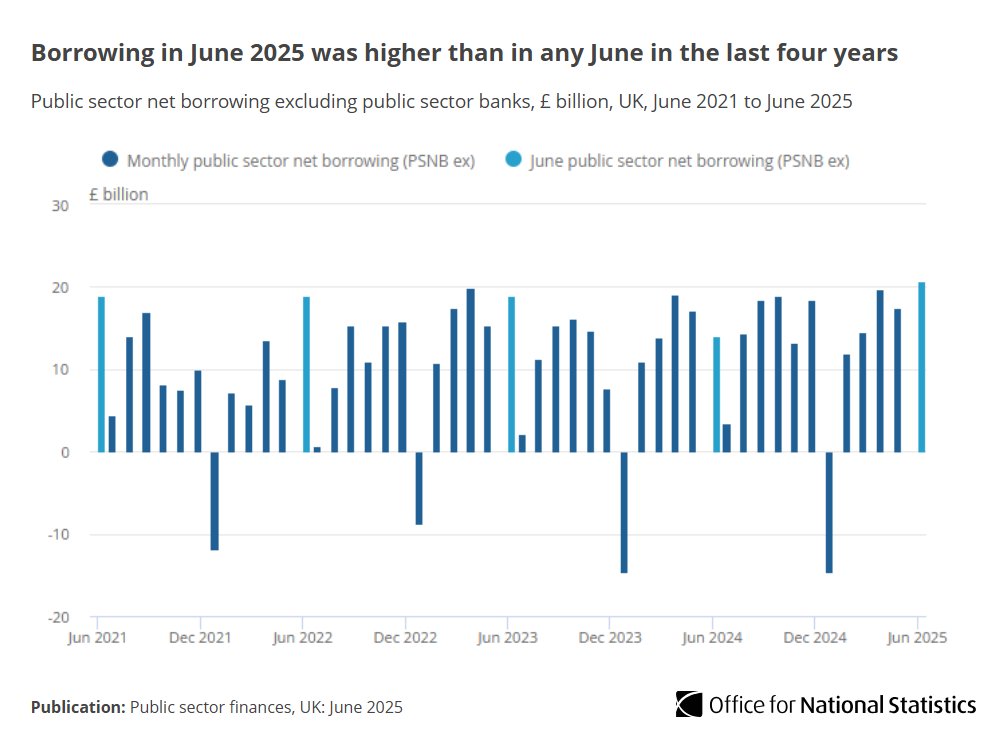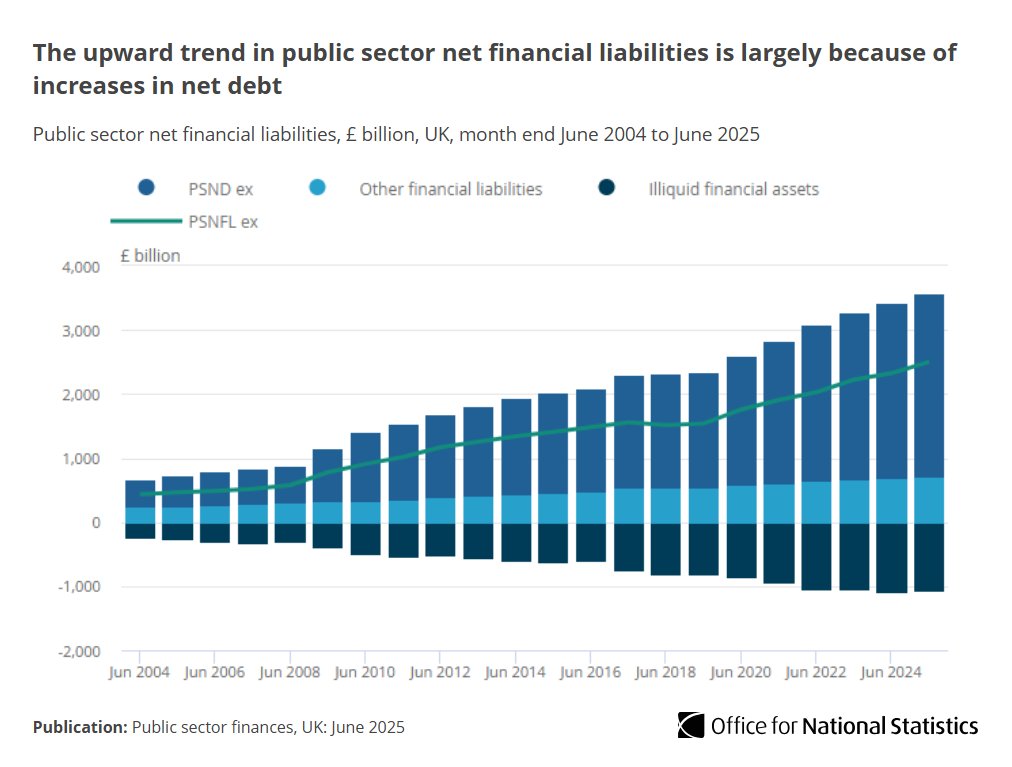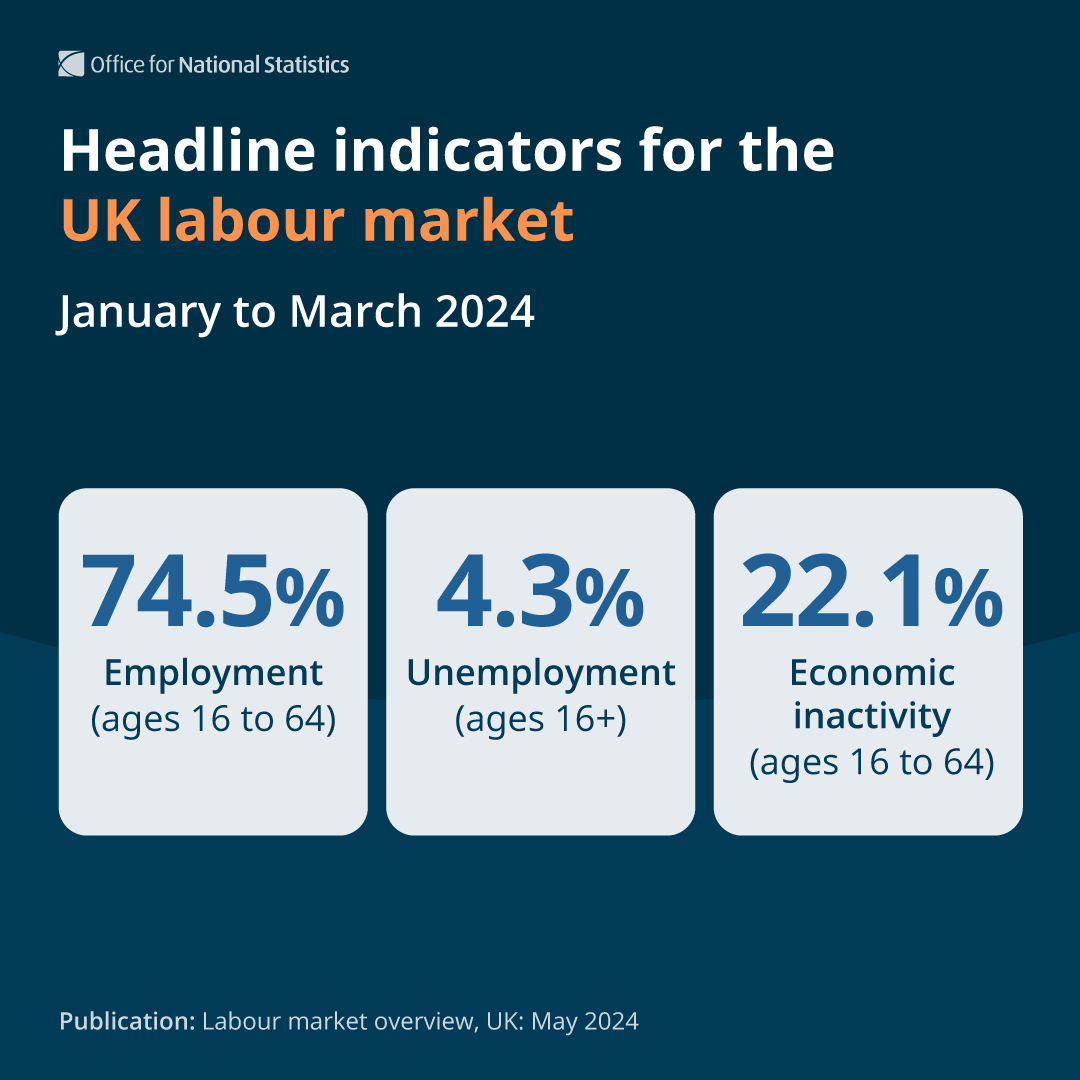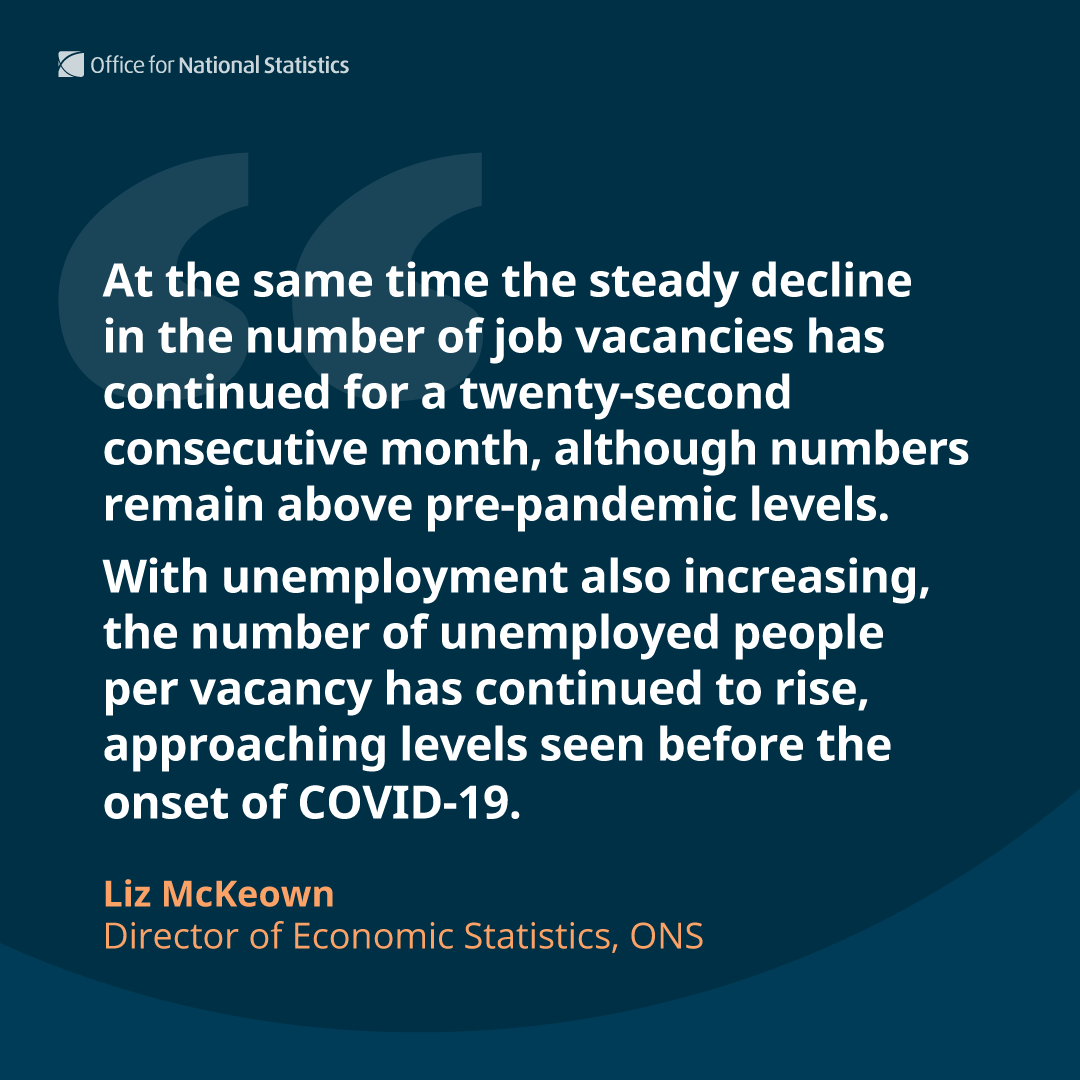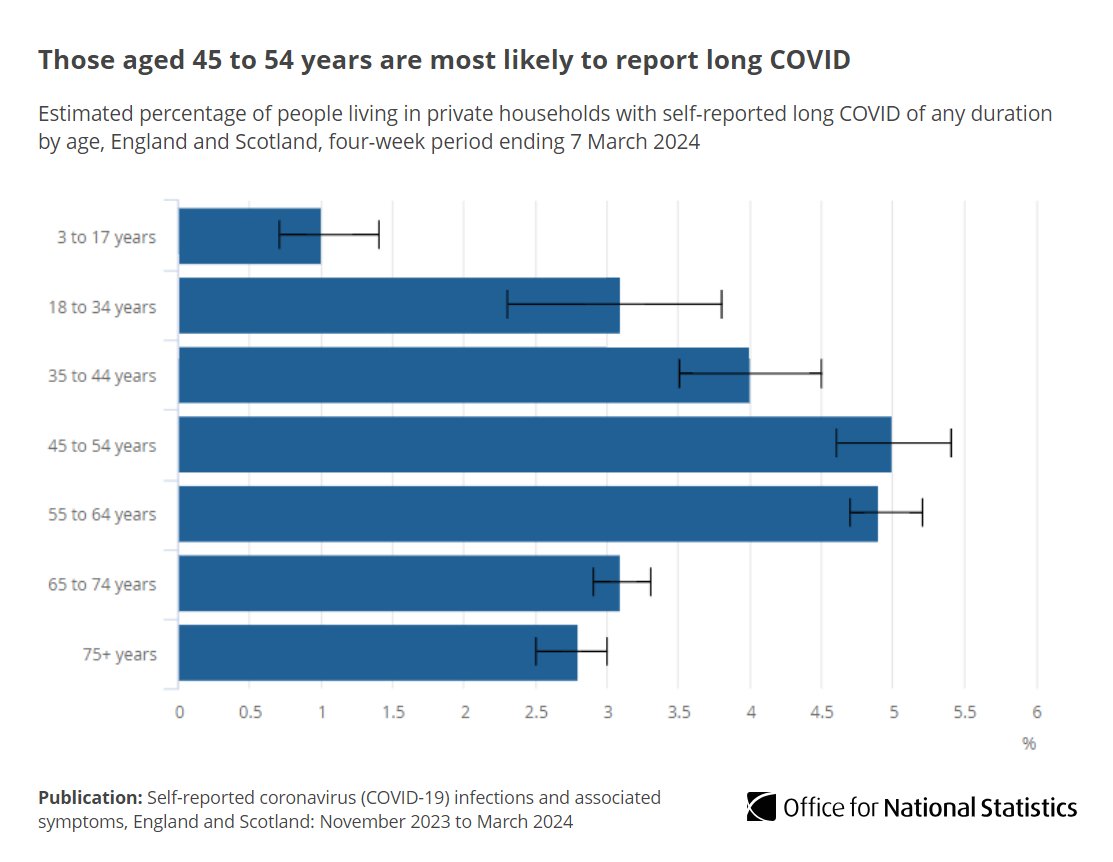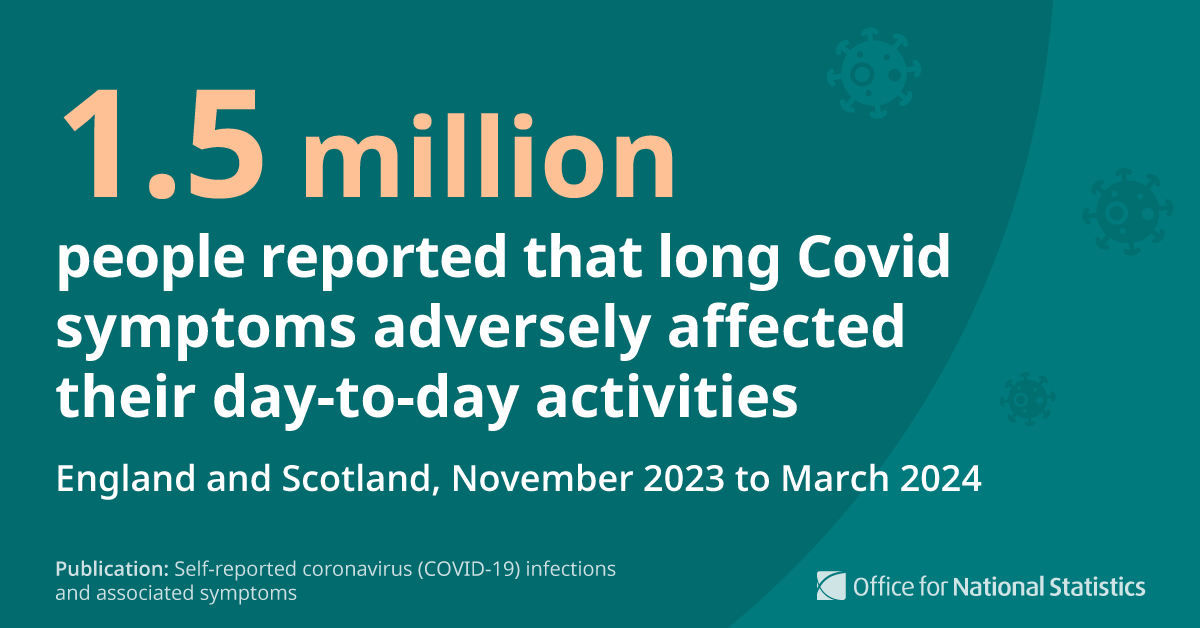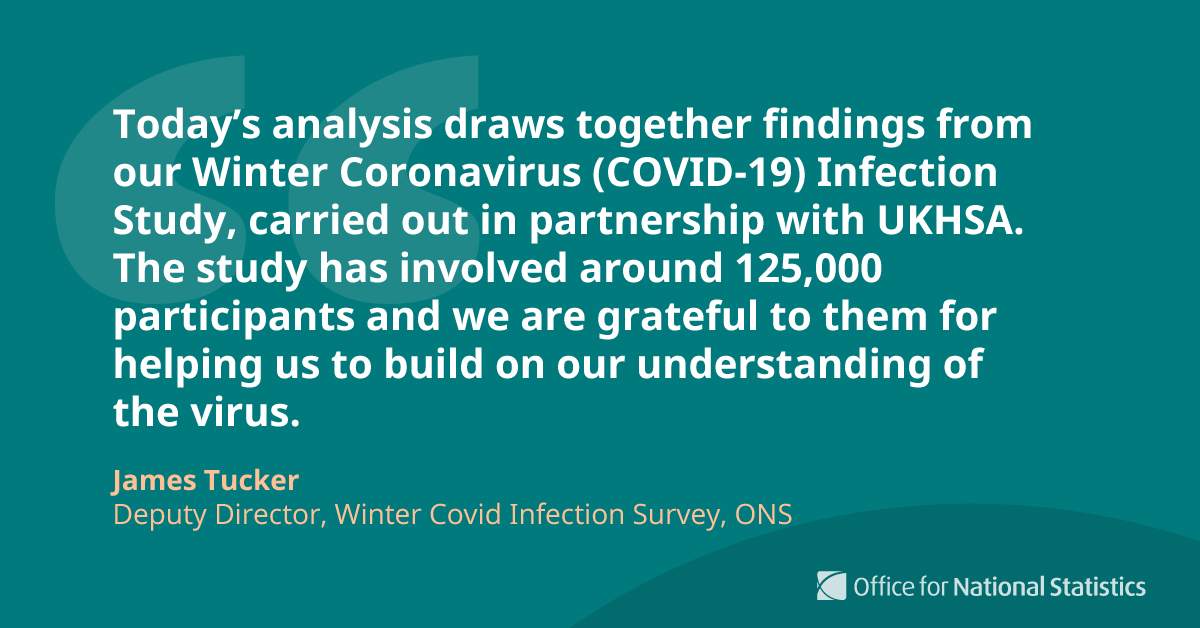Data from the #COVID19 Infection Survey shows infections
▪️decreased in England and Wales
▪️remained level in Scotland
▪️and the trend was uncertain in Northern Ireland
in the week ending 6 November 2021.
➡️ow.ly/2Heh50GM7vF
▪️decreased in England and Wales
▪️remained level in Scotland
▪️and the trend was uncertain in Northern Ireland
in the week ending 6 November 2021.
➡️ow.ly/2Heh50GM7vF

#COVID19 infection rates decreased across the majority of age groups, with an uncertain trend in 35 to 49 years and school Year 12 to 24-year-olds.
The highest rates were still seen in secondary school aged children ow.ly/oKIT50GM7ze
The highest rates were still seen in secondary school aged children ow.ly/oKIT50GM7ze

In England, there was a decrease across most regions, with early signs of an increase in the East Midlands and the trend uncertain in the West Midlands ow.ly/oKIT50GM7ze 

Our #COVID19 insights interactive tool shows the latest trends in infections, deaths and hospitalisations.
Data on COVID-19 from the ONS, Joint Biosecurity Centre and @UKHSA highlights the state of the pandemic across the UK ow.ly/gNEZ50GM7Ow
Data on COVID-19 from the ONS, Joint Biosecurity Centre and @UKHSA highlights the state of the pandemic across the UK ow.ly/gNEZ50GM7Ow

#COVID19 hospitalisations were lower in week ending 7 Nov 21 than the corresponding week in the 2nd wave (week ending 21 Feb 21).
COVID-19 deaths were also lower in week ending 29 Oct 21 than the corresponding week in the 2nd wave (week ending 12 Feb 21) ow.ly/ja1650GM8ic
COVID-19 deaths were also lower in week ending 29 Oct 21 than the corresponding week in the 2nd wave (week ending 12 Feb 21) ow.ly/ja1650GM8ic

In England, #COVID19 positivity rates remained highest in secondary school aged children in the week ending 6 November.
Hospital admissions decreased or remained similar across all age groups week ending 7 November 2021 ow.ly/ja1650GM8ic
Hospital admissions decreased or remained similar across all age groups week ending 7 November 2021 ow.ly/ja1650GM8ic

• • •
Missing some Tweet in this thread? You can try to
force a refresh


